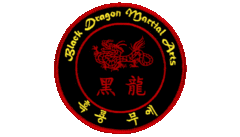KAMSHIN JIU JITSU:
Nippon Kobudo Kamishin Ryu Jujitsu (Japanese Ancient Martial Way Devine Heart Style) is considered a non-classical style that is rich in classical Japanese tradition.
Kamishin Ryu Jujitsu is a consolidation of several forms of Japanese Jujitsu including the Shinyo Ryu, Takaguchi Ryu, Daiyoshin Ryu, Enrei Ryu, and Hakko Ryu. It is an Aiki-Jutsu form being performed in a circular application designed to immobilize the attacker by directing him to a face down prone position. Though it is indeed aiki-jutsu, it is not to be confused with the modern Aikido art. Kamishin Ryu does not contain the same concepts of the Japanese work “Ki” as does the Aikido art. In this regard and in other regards as well, Kamishin Ryu is different and apart from this very fine jujitsu form. Kamishin Ryu requires one to totally master the basic and advanced Kuzushi-waza (Off-Balancing Techniques) and how to divert and/or lead the attacker in such a manner that he will fall.
The use of Mudo-Mawashi (the art of causing one to become non-aggressive by circular movement) is a key technique to be totally mastered. Twenty-five percent of all Kamishin Ryu throwing techniques and hold-down arts are based upon this movement. Close body contact is replaced by paring and guiding the attackers aggressive movements away from you. Many techniques encompass hidden hands striking of vital points of the attackers body while smoothly performing the art. Five percent of our arts contain leg usage to carry impact to the attackers body and limbs. The remaining part of this art covers muscle and nerve pressure points designed to cause short duration pain to the attacker permitting the Kamishin Ryu Jujitsuan the advantage for off-balancing or hold-down control.
Ukemi (Breakfalls) are somewhat different from the norm for the jujitsuan is strictly on their own, in full flight, with no assistance given them by the individual performing the art. Because of this important aspect, great care must be taken by Kamishin Ryu jujitsuans during practice to avoid in-flight collisions between fellow airborne jujitsuans. Many of our takedowns and trhowing arts actually drive the attacker forcefully to the floor. Therefore speedy breakfall application by the individual being thrown is highly important.
In most of our arts, the attacker is driven face/head first into the floor. We therefore train ourselves to be able to roll our bodies just prior to impact to lessen the degree of impact sustained injury. Falling is not to be taken lightly, even by the most advanced Kamishin Ryu jujitsuan. Breakfall practice is a must for all jujitsuans prior to engaging in serious practice. In the Kamishin Ryu form, it is used to warm-up the body to avoid injury from strain and to permit free-flowing movements during practice.
Kamishin Ryu jujitsuans practice their form in pre-arranged formal movements (Kata) at first. Later as the student develops his skill, practice is performed in a controlled rough-dance (Randori) form. In this preview, each player in-turn attacks the other with the defender permitted any defense techniques they so desire.
Safety during practice is all-important and mandatory for all students. Students practice total and complete control as to placement of the individual being thrown and/or taken down. Mutual respect of each other being all-important; for without such, one could maim or kill his fellow student.
As you practice, as you learn of this fine art, keep in mind that only what you as the student put into it will govern what you will receive. Any self-defense art must be practiced to be mastered. It’s up to you!
Brazilian Jiu-Jitsu:
Brazilian Jiu-jitsu is adapted from judo and jiu-juitsu originally taugh in Japan, it is an art that incorporates joint locks, chokes, and throws, into their self-defense techniques. It also specializes in unique and innovative ground work similar to Greco Roman, freestyle, and collegiate wrestling, though there are some definite differences in strategy and technique and with an emphasis on joint locks or submission techniques.
Brazilian Jiu-jitsu got its start in the early 1920’s when japanese judo and jiu-jitsu Master Mitsuyo Maeda taught his art to Carlos Gracie. Carlos taugh his brothers, and in 1925 they opened their first academy. The smallest of the brothers, Helio, became the greatest innovator. Because of his small stature, Helio had to find more effective ways to do the techniques, ways that did not require a high degree of athleticism. This helped to transform the art into an extremely effective means of self-defense that allows practitioners to defeat much larger and stronger opponents. Brazilian Jiu-jitsu has been proven time and again n the Mixed Martal Arts venues, leaving no doubt as to its effectivesness.
Training in Brazilian Jiu-Jitsu gives a total body workout which helps with physical conditioning, mental discipline, increased coordination, flexibility, and a great cardovascular workout.
